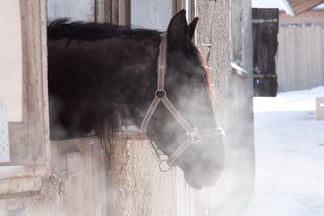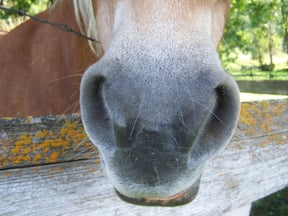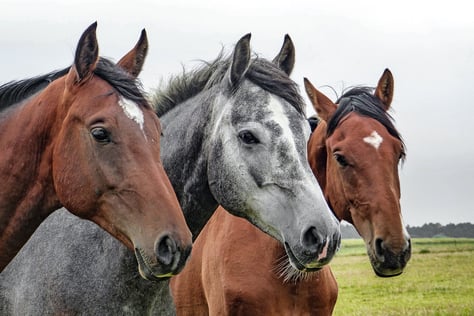Call us today (800) 444-7430
Call us today (800) 444-7430

 The heart itself is divided into two halves and each half has two chambers (atrium and ventricle). The right atrium and ventricle pump blood into the lungs, where it is loaded with oxygen. The oxygen-laden blood returns to the left side of the heart, where the left atrium and ventricle then pump it throughout the body. While all of the systems of the horse must work together, the horse’s respiratory and circulatory systems have a special symbiotic relationship. Both sides must function properly for the horse to remain happy and healthy. It is important that your horse receives the recommended shots to prevent such diseases as influenza, strangles, and rhinopneumonitis.
The heart itself is divided into two halves and each half has two chambers (atrium and ventricle). The right atrium and ventricle pump blood into the lungs, where it is loaded with oxygen. The oxygen-laden blood returns to the left side of the heart, where the left atrium and ventricle then pump it throughout the body. While all of the systems of the horse must work together, the horse’s respiratory and circulatory systems have a special symbiotic relationship. Both sides must function properly for the horse to remain happy and healthy. It is important that your horse receives the recommended shots to prevent such diseases as influenza, strangles, and rhinopneumonitis.

From horse stalls to barn doors, stable flooring and entrance gates, Classic offers the widest product lines in the industry while continuing to expand through innovation and strategic alliances.
We look forward to answering your questions. Our sales team is knowledgeable about everything from horse barn design to equine stall systems and readily available to assist you in planning your Classic barn!
ph: (800) 444-7430
em: sales@classic-equine.com
